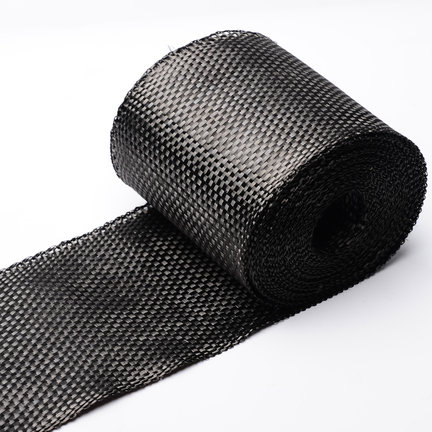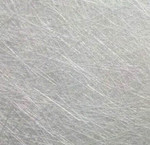Fibers / Fabrics / Core material
Glass, carbon and aramid mats and fabrics for composites, to be used with different resins for lamination and reinforcement.

Fabrics for composites
movie by Kyle.Engineers at Youtube
For the production of support caps and composite materials, boards and laminates, the repair / production of boats, cars and even in aviation.
Fabrics are an indispensable product in the manufacturing industry and for do-it-yourselfers. Fabrics significantly strengthen resins and allow the user to make and repair anything.
We call fabrics and resins used together composites. They are mainly used in the laminating process where alternating fabric and resin is applied until a plate or object or wall of desired thickness and strength is obtained.
Composites are used for endless applications on a small scale or in series production, such as making or repairing:
- ponds
- swimming pools
- shower enclosures, shower trays and bathtubs
- cars
- Boats
- aviation parts
- bicycles
- rackets and hockey sticks
- surfboards
and everything else that has to be sturdy and sometimes a bit flexible or have a high impact resistance.
The choice is huge…
Materials
There are many products that fabrics can be made from. These range from organic products (cotton and flax) to highly artificial products.
Although the fabric is organic in the case of flax or cotton, this does not mean, of course, that the end product surrounded by a non-organic resin is also biodegradable.
To keep everything clear, we offer the three most used products:
- Glass fiber / Fiberglass
- Carbon fiber
- Aramid fiber
Glass fiber
Fiberglass is relatively cheap, strong and "more flexible" than carbon. This allows fiberglass to bend well under force without breaking. This material is mainly used in industrial products.
Fiber optic does not conduct current and heat and does not influence electromagnetic fields. That is why glass fiber is widely used in and around electronic products and antennas.
Glass fiber is highly resistant to high temperatures, but it can melt.
Glass fiber is highly resistant to chemicals and acids. For processing in concrete with high requirements in construction, special coated glass fibers are required, which we do not yet offer through the webshop.
Glass fibers are highly resistant to UV.
Glass fiber is in principle more harmful than carbon because the material contains microscopic glass splinters during processing (sawing and drilling, etc.). This is especially bad when inhaled and can also irritate the skin from small cuts. We therefore always recommend using mouth masks and gloves. In any case, a face mask with an organic filter is sensible if a resin has already been incorporated into the fabric (ie when you are going to process the composite).
Carbon fiber
Carbon fiber is stronger and lighter than glass fiber, but it is also stiffer and therefore has a lower breaking point than glass fiber under certain stress. The higher stiffness also means that when the product breaks, it happens under smaller deformation than with glass or aramid. So the product is stronger but more brittle (compare a porcelain cup with a plastic cup)
Carbon fiber often also has an aesthetic edge over glass fiber. This material is mainly used in consumer products.
Carbon is a good electrical conductor. This also makes carbon susceptible to electrical / galvanic corrosion.
Carbon is resistant to high temperatures and does not melt.
Carbon fibers are also resistant to UV
Carbon fiber is relatively harmless, but we recommend using a mouth mask when working (sanding, sawing, drilling, etc.). In any case, a face mask with an organic filter is sensible if a resin has already been incorporated into the fabric (ie when you are going to process the composite).
Aramid fiber
The best known product name for aramid is Kevlar, which is used in bulletproof vests.
Aramid is the strongest product per gram. Aramid fibers also have the lowest density. In principle, an object of glass or carbon can also be made from Aramid, but then thinner and lighter while retaining strength.
The compressive force of aramid is just many times smaller than that of glass fibers and carbon fibers. This makes aramid less suitable for applications where pressure can be placed on the system.
Aramid is "stiffer" than glass but "more flexible" than carbon.
Aramid is not electrically conductive.
Aramid does absorb water and must be coated if this is not desired. In addition, the adhesion of resins to aramid is not ideal. This makes it necessary to check boats or boat parts made of aramid for damage, so that no water can penetrate.
Aramid is highly resistant to high temperatures and does not melt.
Aramid fibers degrade under UV and can also withstand acids and bases and hyperchloride (bleach) and peroxide.
Aramid fibers are very durable, so much so that separate scissors are needed to cut them.
Aramid fibers is relatively harmless, but we recommend using a mouth mask when working (sanding, sawing, drilling, etc.). In any case, a face mask with an organic filter is sensible if a resin has already been incorporated into the fabric (ie when you are going to process the composite).
Here an informative and fun movie about the pros and cons of these 3 materials: https://www.youtube.com/watch?v=KHXVf0SaJpA
Tissues
In addition to the influence of the material the mat / fabric is made out of, the way of weaving and the thickness, density and number of layers also determine how a mat behaves.
For the sake of overview, we have also made a choice here for the most commonly used methods. We offer these fabrics and webbing in glass, carbon and aramid.
- Normal weave, also known as square weave.
- Twill weave
- Biaxial tissue
- Layment / Chopped Strands Mat (CSM)
Square fabric
This 1-ply weave is the best known way of weaving, where the weft thread runs under and over each guy line. This produces dense fabrics with relatively high stiffness and strength. These fabrics are more difficult to drape / shape than twill fabrics of the same material.
Twill weave
This 1-layer fabric is a looser fabric than the normal variant. Here the weft thread goes under 2 or more guy lines and then over 2 or more lines etc. From a distance, such a weave resembles parallel diagonal lines. This weave is looser and is easier to shape than a normal weave and certainly also has an aesthetic appearance when made from carbon. This weave is often seen in finishing layers.
Biaxial tissue
These are basically mats of strands that run in one direction. These mats consist of 2 layers where the layers are mutually at a certain angle. Usually 90 o relative to each other (for example +45 and -45 o ). Because the layers consist of strands, they are very strong in the direction / parallel to those strands. So a biaxial fabric is very strong in the direction of each layer. Triaxial fabrics consist of three layers with mutually different angles of strands and are thus strong in three directions.
CSM
These are not fabrics but mats of cut long fibers (of 5 cm, for example) that are sprinkled criss-cross over each other. The fibers are often glued together by a polyester powder. This powder dissolves in polyester casting resin, allowing good absorption of the mat in the resin. Because the polyester powder does not dissolve in resins other than polyester and vinyl ester, this product is mainly used for polyester and not for epoxy, polyurethane or acrylic resin.
Process
In addition to the materials and fabrics, a third factor also influences the process and the end product. This is the way the mats and resin are processed.
Laminating
The most common way is laminating by hand against a surface or in a positive mold (also called a plug) made for that purpose.
Vacuum bagging or vacuum supported lamination
To make a laminate even stronger, a vacuum bag is sometimes placed around the whole after laminating. By drawing vacuum, the resin penetrates deeper and more completely into the mat structure.
This often gives stronger and thinner end results.
Infusion
The model or mold is covered with the desired mats and fabrics. A vacuum bag is then placed around the model. Then, by vacuum, a mixed resin is drawn from a vessel into the bag where it is drawn through the entire tissue.
This process requires meticulous work and is not always applicable, but gives nice thin strong results.
RTM
At RTM, a 2 or multi-part negative mold is made that is covered with fabrics or mats. Then the mold is closed and resin is injected (usually not under vacuum). The mold is often heated to the ideal processing temperature of the resin.
This is a good way for small productions of relatively flat or simple shapes without undercuts.
Resins
The mentioned mats and layments must also be joined with a resin. The most commonly used resins for this are polyesters, vinylesters and epoxies. Acrylic resin is usually combined with fiberglass triaxial matting and c-veil.
The fabrics and mats of glass, carbon and aramid are often primed (primed) by the manufacturer to improve adhesion with the resin that you are going to process with these fabrics.
Glass fiber is relatively cheap and is therefore often combined with polyester. Polyester is a relatively cheap resin. Hence, fiberglass is often primed for all resins including polyester.
Carbon fiber is often more expensive and is therefore mainly used with the more expensive epoxy or sometimes vinyl ester. Hence, carbon fabrics are primarily primed for good adhesion with these resins and less so with polyester.
Carbon fiber and polyester combinations are sometimes used for small projects where costs have to be low, but a certain appearance is desired and where no real strength is required from the end product. Examples are spoilers, mirror frames etc.
Help
There are many more processes and variants of the above processes, but this is the basis.
Each project requires you to overthink what material and process will yield the best results. Thankfully there are now many examples in google and youtube.
But of course we are also happy to help you out!




